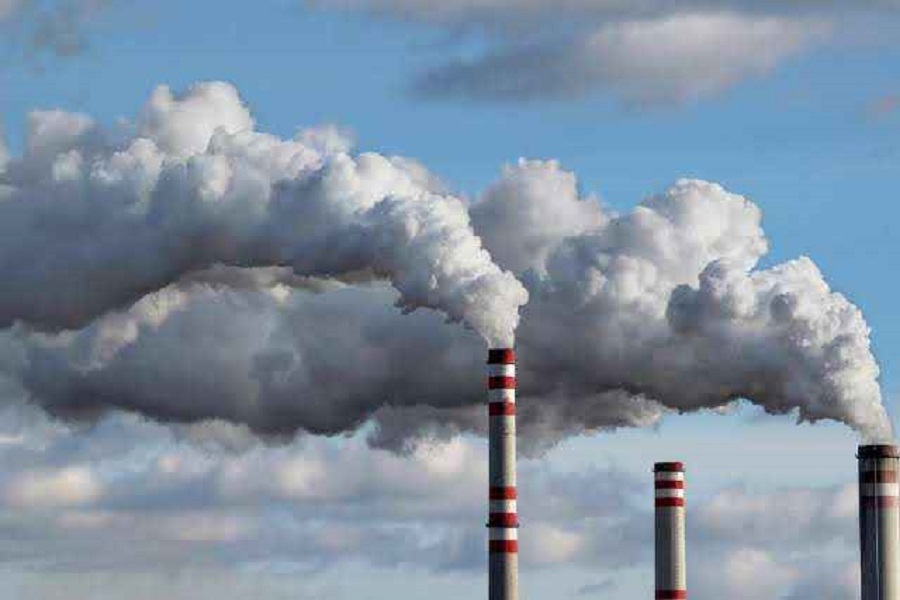 English
English

Short and long-term exposure to fine particulate matter (PM2.5) air pollution is associated with an increased risk of hospitalisation for severe heart and lung disorders. Read further on Dynamite News:

Washington DC: Short and long-term exposure to fine particulate matter (PM2.5) air pollution is associated with an increased risk of hospitalisation for severe heart and lung disorders, according to two large US studies published in The BMJ.
Together, the results suggest that no safe threshold exists for heart and lung health.
According to the Global Burden of Disease study, exposure to PM2.5 accounts for an estimated 7.6 per cent of total global mortality and 4.2 per cent of global disability-adjusted life years (a measure of years lived in good health).
In light of this extensive evidence, the World Health Organization (WHO) updated the air quality guidelines in 2021, recommending that annual average PM2.5 levels should not exceed 5 mg/m3 and 24-hour average PM2.5 levels should not exceed 15 mg/m3 on more than 3-4 days each year.
Read This Also: Health: Common anesthetic can improve social symptoms of depression
In the first study, researchers linked average daily PM2.5 levels to residential zip codes for nearly 60 million US adults (84 per cent white, 55 per cent women) aged 65 and over from 2000 to 2016. They then used Medicare insurance data to track hospital admissions over an average of eight years.
After accounting for a range of economic, health and social factors, average PM2.5 exposure over three years was associated with increased risks of first hospital admissions for seven major types of cardiovascular disease - ischemic heart disease, cerebrovascular disease, heart failure, cardiomyopathy, arrhythmia, valvular heart disease, and thoracic and abdominal aortic aneurysms.
Compared with exposures of 5 mg/m3 or less (the WHO air quality guideline for annual PM2.5), exposures between 9 and 10 mg/m3, which encompassed the US national average of 9.7 mg/m3 during the study period, were associated with a 29 per cent increased risk of hospital admission for cardiovascular disease.
Read This Also: Children born in October least likely to get influenza
On an absolute scale, the risk of hospital admission for cardiovascular disease increased from 2.59 per cent with exposures of 5 mg/m3 or less to 3.35% at exposures between 9 and 10 mg/m3. "This means that if we were able to manage to reduce annual PM2.5 below 5 ug/m3, we could avoid 23 per cent in hospital admissions for cardiovascular disease," say the researchers.*
These cardiovascular effects persisted for at least three years after exposure to PM2.5, and susceptibility varied by age, education, access to healthcare services, and area deprivation level.
The researchers say their findings suggest that no safe threshold exists for the chronic effect of PM2.5 on overall cardiovascular health and that substantial benefits could be attained through adherence to the WHO air quality guideline.
"On February 7, 2024, the US Environmental Protection Agency (EPA) updated the national air quality standard for annual PM2.5 level, setting a stricter limit at no more than 9 ug/m3. This is the first update since 2012.
However, it is still considerably higher than the 5 ug/m3 set by WHO. The newly published national standard was not sufficient for the protection of public health," they add.*
In the second study, researchers used county-level daily PM2.5 concentrations and medical claims data to track hospital admissions and emergency department visits for natural causes, cardiovascular disease, and respiratory disease for 50 million US adults aged 18 and over from 2010 to 2016.
During the study period, more than 10 million hospital admissions and 24 million emergency department visits were recorded.
They found that short-term exposure to PM2.5, even at concentrations below the new WHO air quality guideline limit, was statistically significantly associated with higher rates of hospital admissions for natural causes, cardiovascular disease and respiratory disease, as well as emergency department visits for respiratory disease.
For example, on days when daily PM2.5 levels were below the new WHO air quality guideline limit of 15 mg/m3, an increase of 10 mg/m3 in PM2.5 was associated with 1.87 extra hospital admissions per million adults aged 18 and over per day.
The researchers say their findings constitute an important contribution to the debate about the revision of air quality limits, guidelines, and standards.
Both research teams acknowledge several limitations such as possible misclassification of exposure and point out that other unmeasured factors may have affected their results.
What's more, the findings may not apply to individuals without medical insurance, children and adolescents, and those living outside the US.
However, taken together, these new results provide a valuable reference for future national air pollution standards. (ANI)
No related posts found.